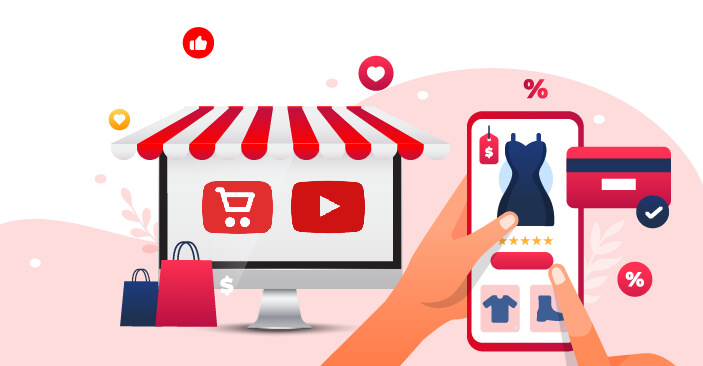
You can buy every single game, phone, and product from the world’s largest video site, very soon!
In a recent earnings call, Google CEO Sundar Pichai recommended YouTube’s ocean of popular product “unboxing” videos to change into a shopping destination.
Bloomberg’s report suggests that Google is in its early phases of converting YouTube into a shopping target. A YouTube delegate verified that the firm is examining these functionalities with a confined figure of video channels. YouTube termed this step as a trial and denied to share more details.
Current Scenario
COVID 19 pandemic has knocked marketing budgets of physical retail and travel segments that are chief Google advertisers. In the meantime, e-commerce has roared, as individuals are staying home and ordering more online products. While Google was standing aside, its competitors Facebook and its Instagram app has become hothouses of online shopping. Amazon has witnessed sales mount whereas Google grieved its very first profit drop in the second quarter.
Even though consumers are determined to buy a product after going through a YouTube video, they have to visit a different site to order.
Competitive Advantage
- The aim is to transform YouTube videos into a massive brochure of items that audiences can check and click. This would enable consumers to directly buy products without leaving YouTube.
- Selling is one of numerous tactics YouTube is trailing to expand for the revenue of video creators besides advertisements. This new action will help YouTube to dig out the data it gathers from videos to fortify its advertisements business.
- According to the president of e-commerce startup Basket, Andy Ellwood- “YouTube is one of the least utilized assets. If they decided they want to invest in it, it’s a huge opportunity for them.”
- Since 55% of regulars use videos to make their buying decisions, YouTube currently is a shopping destination of several categories.
Steps Taken in the Past
YouTube has made several efforts in online business but achieved inadequate success. YouTube got aligned with Merchbar to sell authorised merchandise beneath the videos. This opened a door for YouTubers to endorse their products, yet transactions were concluded on Merchbar’s site.
Another action taken was the “Shopping Actions feature” on YouTube. Viewers can shop products shown in videos, but they have to visit another site to make the transaction.
Competition Scenario
A survey of marketers from RBC Capital disclosed “social commerce” as a spotlight for Facebook and Pinterest.
Facebook’s stock hopped high when Mark Zuckerberg revealed an updated Shops feature for retailers. Amazon and Walmart have fiddled with shopping videos for a couple of years. So far, no retailer has displayed much progress
However, in China, this business prototype has a lift-off. The Chinese version of TikTok – Douyin, use live videos in real-time to sell products from make-up to gadgets to billions of users.
Work in Progress
YouTube now has started asking video-makers to tag and track products included in their slides. The information will then be connected to shopping tools and analytics, from parent Google. Moreover, a new integration with Shopify is in the testing phase for selling items through YouTube. These measures can renovate YouTube from an advertising king into an innovative challenger for e-commerce frontrunners like Amazon and Alibaba.
Close End
It’s uncertain how YouTube will make income from these transactions. Nevertheless, the service offers subscriptions for YouTubers and receives a margin of 30% from those earnings.
On one side, this can unlock additional revenue channels for video creators if they earn a bonus when customers purchase tagged products. On the other side, it might diminish the credibility of creators’ content if they’re abruptly earning from their featured products.
Let us hope that YouTube discovers an answer that benefits viewers and YouTubers without disturbing content authenticity.
